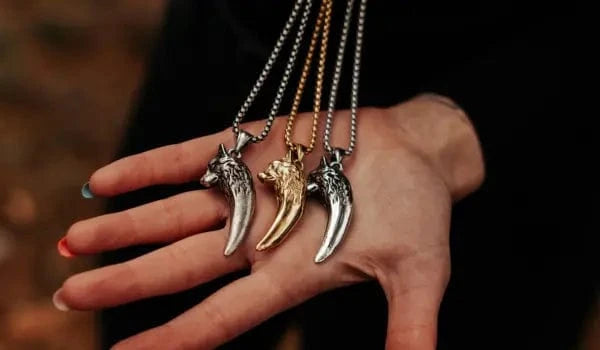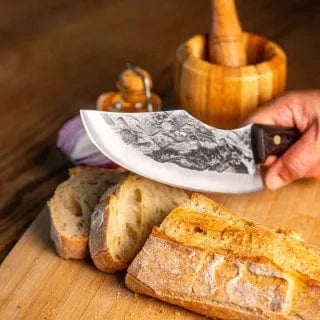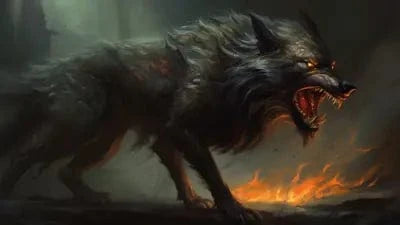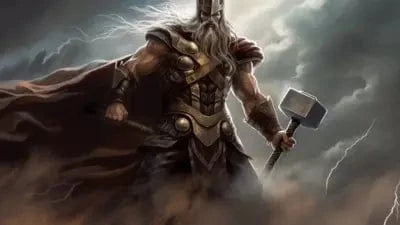Tattoos have always been an important part of human social practices. Their styles, symbolism, and meanings may vary from culture to culture, but they universally represent the same thing:the desire to improve our spirits by decorating our bodies with the things we hold dear. Despite the many reversals in different social climates, tattoos have managed to swim in the ocean of contemporary trends.
According to some historical sources, tattooing was also an important part of the Viking culture; according to others, there is no real evidence to support this. Truth be told, unlesswe find a well-preserved frozen Viking in the mountains of Scandinavia, we will never be able to tell which side of the historians we should side with.
In this article, we will try to shed some light on this under-discussed subject, presenting both sides of the argument equally. We'll talk about the mores, beliefs and preferences of the Vikings that may have introduced them to the world of tattooing. So if you want to know more about the origin of tattoos, their purpose and impact on Viking society, there's no better place to go.
the origins of tattoos
We don't really know when humans started tattooing, but we can say with absolute certainty that tattoos are almost as old as humanity itself. The oldest example of a tattoo found was a body pulled from a glacier in the Alps. It was almost covered in tattoos (it had 61). It was concluded that the body had died somewhere around 3250 BC, which would make it 5000 years old. At the same time, tattooing became a strong cultural tradition of the Austronesian peoples, where it remains a popular art style even today. In Europe, the strongest tattoo culture was seen among the Gallese and Picts during the Iron Age in Britain. In Ancient China, tattoos were considered barbaric, so they used tattoos as a method of humiliation (they marked prisoners and slaves with tattoos on their foreheads as a symbol of captivity or as a sign of ownership).
On the other hand, unlike China, Japan had a very strong tattoo culture. There, it often symbolised a person's social status.This practice ended at some point and from the early 17th century until the mid-19th century, tattoos in Japan were mainly worn by firemen, prostitutes and manual workers as a means of mutual identification. They also began to use it in a similar way to the Chinese, to mark prisoners by tattooing the symbol of a dog on their foreheads. In 1868, tattooing was banned in Japan, giving rise to a large subculture of tattooed people, stigmatised by the rest of society. This often led them into the criminal life and created fertile ground for the creation of the Yakuza, a gang that is active today and has a huge tattoo culture as well as its own tattoo artists.

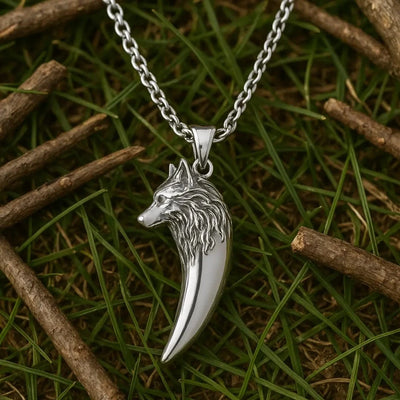
34,90€
50,00€
As far as Europe is concerned, it is important to say that the Picts and Welsh were not the only ones who liked tattoos. The Greeks and Romans initially used them in a similar way to the Chinese, as a method of humiliation. Later, tattooing soldiers even became a regular practice, one that continues to this day. Of course, tattooing was also very prevalent among the Vikings, but we'll get to that a little later.
The popularity enjoyed by tattoos in modern Western culture began after James Cook's voyage to the South Pacific. However, it would be a mistake to think that this voyage was the only reason for the rise in tattoo popularity. Instead, Cook's voyage was certainly responsible for the introduction of the word "tattoo" to Europe. The word "tattoo" comes from the Tahitian word "tatau". But apart from that, there are many sources that definitely confirm that tattoos were very common throughout history among early Europeans. They were also very common among the Pilgrims of America, who had much contact with tattoos through the Native American community.
DID THE VIKINGS HAVE TATTOONS?
If it weren't for a man called Ahmad ibn Fadlan, a famous Arab traveller of the 10th century AD, we would probably have no reasonable doubt about whether or not the Vikings had tattoos. He wrote about many of the peoples he came into contact with, but in one of his travelogues Ibn Fadlan describes the Rus, who are commonly referred to as Vikings. While this famous Islamic scribe had little to say about the good body odour and hygiene of the Vikings, he had only words of admiration for the rest of the Viking way of life.
It should not be forgotten that, whatever their training, medieval scribes wrote in a poetic rather than informative manner. So, for example, instead of declaring that the Nordic men are probably the tallest humans he has met in his life, Ibn Fadlan expresses his admiration lyrically and says that the Vikings are as tall as palm trees, pale and red-haired. As you have probably guessed, the other part of this verse refers to their fair complexion and rosy cheeks due to the harsh climate of Scandinavia. Ibn Fadlan continues his praise by saying, "Blond and red, they wear neither tunics nor kaftans. Each man wears a coat with which he covers half his body so that one arm is uncovered. They carry axes, swords, daggers and have them always at hand. They use Frankish swords with broad, ridged blades."
Some of you may be wondering why one man's impressions of the Vikings are of such great importance in answering the question, Did Viking tattoos really exist?Is a Viking tattoo simply part of Norse mythology? Well, Fadlan followed up his observation of the Vikings with a sentence that would spark discussion among historians for many centuries. Indeed, on one of his visits to the Vikings' homeland (Scandinavia), Fadlan claimed that their bodies were fully tattooed from their fingertips to their necks and that the Viking tattoo was dark green and dark blue in tone, indicating that the ink in the tattoo was probably made of wood ash.
Although Fadlan was a leading medieval figure and his words were of great value to his contemporaries and historians of the time, one may ask: How is it that no one else wrote about this notable fact about the ink used in the Viking tattoo? How is it that thea Viking literature covered all aspects of their daily life (including hairstyles, fashion and jewellery) but never mentioned that the most prized symbols, designs and Norse gods were not only written on stones and weapons, but were tattooed on their own skin?

MOST COMMON VIKING TATTOONS
According to modern historians who have drawn on Fadlan's claims and their own understanding of the Viking mentality, the ancient Norse tattoos were most likely no different from the Viking symbols they carved on objects. So in this part of the article, we will talk about the symbols most often used for tattoos in Viking times.
Knowing that Norse mythology played such an important role in the daily life of the Vikings, it is hard not to think that its stories were not among the most popular tattoo designs in Viking times. In all likelihood, the Norse gods, especially Odin, were often the main subject of Viking tattoos that were depicted on Viking skin. Various symbols from Norse mythology, such as Valknut and Sleipnir, still manage to remain relevant in the tattoo world. Let's take a look at some of the most popular Viking tattoos today.
I'll let you pause your reading to watch this video thINK tattoo.
YGGDRASIL TATTOO - THE TREE OF LIFE
The symbol of the sacred Norse tree of life, Yggdrasil, was probably one of the most popular tattoos in Viking times. Most of us know that, among the many Viking symbols, Yggdrasil is first mentioned in Snorri Sturluson's Poetic Edda in the 13th century. Sturluson describes Yggdrasil as a giant ash tree, placed in the middle of the cosmos, whose branches could touch the sky, and whose roots were deeply rooted in the Earth. The symbol of Yggdrasil represented the cycle of life, as its nine roots represented the nine realms of existence. So, if you're short on tattoo ideas and want to pay homage to your Viking ancestors with something with deeper meaning, Yggdrasil would probably be the right choice.

VALKNUT TATTOO - THE TRIPLE NODE OF KILLED WARRIORS
Another popular Viking symbol you might want to consider when choosing the appropriate image for your new tattoo would undoubtedly be the symbol of Valknut, the triple knot of slain warriors who are ready to be welcomed by Odin. Because of its simplistic design, Valknut would be the right choice for anyone who wants to keep their tattoos subtle but significant. Valknut's symbol consists of three interlocking triangles that probably also represent the heart of Hrungnir, a brave stone giant. We can therefore say that the meaning of Valknut is related to fearlessness when it comes to accepting death as a natural part of life.

VEGVISIR TATTOO - THE NORTHERN BOUSSOLE
Many tattoo artists still find inspiration for their art in various Viking motifs. The symbol of Vegvisir, commonly known as theNordic compass, is undoubtedly one of them. Vegvisir is considered not only the symbol of travellers and seafarers, but also the symbol of orientation and shelter in times of trouble. Vegvisir was most likely used by Odin, the most powerful of the Norse gods, who was himself a traveller, but thanks to his magical compass he never got lost.
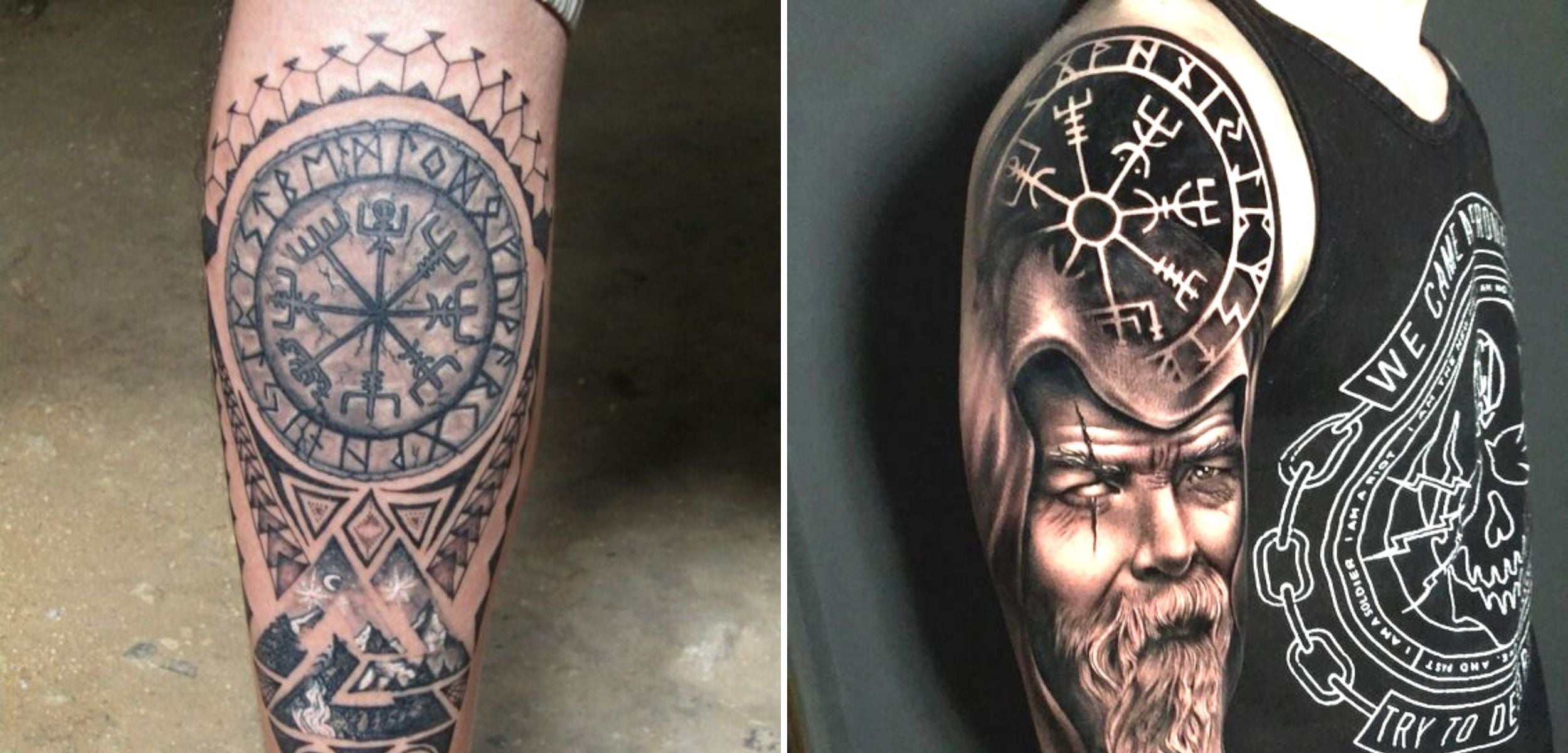
SLEIPNIR TATTOO - THE ODIN STALK
Whether you consider yourself an animal lover or not, it's hard to believe that you wouldn't love Sleipnir, aneight-legged stallion of Odin, who is considered the fastest of all creatures on Earth. So if you sometimes feel like you can't do everything on your own, get a Sleipnir tattoo and sleep peacefully, knowing there's someone to carry you when your legs get tired.

TATTOO MJOLLNIR - THE HAMMER OF THOR
According to Norse mythology, there was no weapon more powerful than Mjölnir, the famous hammer of Thor. Mjölnir could cause storms, earthquakes, floods and wars in just a few minutes. So who wouldn't love to have such a powerful weapon when facing everyday obstacles like their tattoo?

WHAT DOES VIKING TATTOOS REPRESENT?
As you can see, Viking tattoos are mainly based on some of the most important Nordic symbols and mythical stories. Their designs have not been chosen at random, as they are meant to protect and guide each individual man. As a Viking, you can tell everything about a person's life just by seeing their tattoos. Different styles of runes and symbols could tell you about the origin of a certain Viking. The location of the tattoo, its design and meaning could tell you about his profession, his family and, most importantly, the Nordic gods he honoured most.
Viking tattoos were intended for more than just a cosmetic appeal. They were often attributed withmagical powers that could, for example, help you achieve more wealth, success in war or general prosperity. Historians assume that getting the first tattoo in Viking times was also an initiation ritual in which young boys and girls were welcomed into the world of adulthood. This ritual was probably followed by getting the first beer, the first arm ring and the right to be considered an equal member of society.
I'll leave you again with a video that talks about tattooing!
FINISHING...
We hope that after reading this article, you have realized the common misconception that Viking tattoos are only for people of Scandinavian descent. You don't have to be a biological heir to Odin to proudly wear some of his symbols on you at all times. All you need to have to give yourself one of the many Viking tattoos is a love and appreciation for the Scandinavians, their culture and traditions.
Thank you for reading, it's a pleasure to write for Odin's Hall, the leading brand in accessories from Norse mythology.
You can visit our collections of Vikings jewellery, it will be a first step before a Nordic tattoo.
You can also continue reading by discovering the history of Viking beer for example.
SKOL!!
